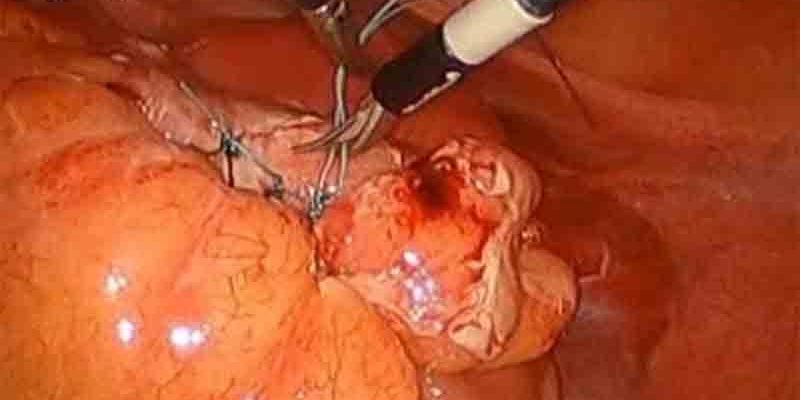Laparoscopic primary repair of perforated diverticulitis to eliminate requirement for temporary colostomy
This is a 52 years old female who presented to the emergency room with two days history of severe left lower quadrant abdominal pain, nausea, vomiting, and fever. She was found to have severe tenderness and guarding in the left lower quadrant and her abdominal CT scan showed severe sigmoid diverticulitis with micro-perforation and significant peri-colonic inflammatory changes. Patient was admitted to the hospital and placed on conservative treatment with NPO, IV antibiotics and pain control. However, she continued to have increasing abdominal pain and spiking fever within the first 24 hours of admission. She was taken to the operating room for diagnostic with laparoscopy specialist, possible sigmoid colon resection and colostomy.
Laparoscopic Surgery
Upon entry to the abdomen she was found to have significant sigmoid diverticulitis, peri-colonic inflammatory adhesions, small inter-loop abscess and frank intraabdominal purulent fluid. There was evidence of micro-perforation of sigmoid colon with no gross fecal contamination. A sigmoid colectomy with temporary colostomy is the standard of care in these emergency situations. These patients would require second operation to take down colostomy and reconstruct their colon after minimum of three months. However, in this case to prevent a temporary colostomy and improve the patient quality of life post-operatively, it was decided to repair the micro-perforation primarily and drain the abscess.
This video demonstrates the laparoscopic lysis of inflammatory adhesions, primary closure of the micro-perforation, drainage of the abscess and placement of an intraabdominal drain. Patient tolerated the procedure very well and was treated with 14 days of IV antibiotics. She was treated in the hospital for three days and the rest of the IV antibiotic course was continued as an outpatient basis. Three months later she underwent a laparoscopic surgery sigmoid colectomy with primary anastomosis. This approach did eliminate the requirement for creation of a temporary colostomy and improved the patient`s quality of life tremendously within that three-month interval. Obviously, this surgical option would not be suitable in most emergency cases when there is gross contamination or when patient is extremely sick and unstable. However, in selected cases it could be the alternative surgical option. For more information or to contact Dr Iraniha Laparoscopic Specialist please contact Surgical Oasis Orange County Surgical Center








